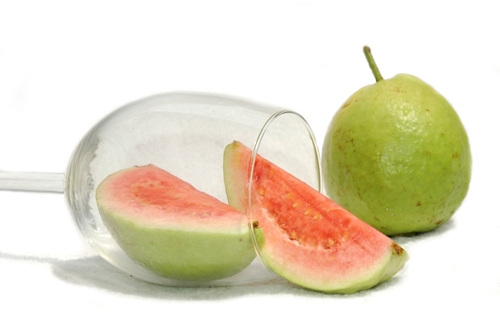
1. Guavas
1. Another tropical and divinely delicious fruit. Guavas are awesomely rich in vitamin C, and other nutrients and are delicious eaten raw or in smoothies. They have a unique flavor, taste, and health-promoting qualities, and are considered as being in the category of the “super-fruits.” 2. Guavas are a rich source of soluble dietary fiber, which protect the mucous membrane of the colon in several ways: It helps to decrease the exposure time to toxins; and binds to cancer-causing chemicals in the gut. 3. Guavas are very good source of Vitamin-A: Flavonoids such as beta-carotene, lycopene, lutein and cryptoxanthin, which have antioxidant properties that are essential for maintaining healthy mucus membranes and skin, and for optimum health. Consuming natural fruits rich in carotene and beta-carotene such as guavas can help to protect us from lung and oral cavity cancers. 4. Guavas contain antioxidants, poly-phenolic and flavonoid compounds that are crucial in the prevention of cancers. This miracle fruit also helps the fight against aging, and is an immune-booster. A half a cup of guava contains almost 200 mg(more than the RDA) of vitamin C and worried about calories? That same half cup of guava contains only 56 calories...
1. Another tropical and divinely delicious fruit. Guavas are awesomely rich in vitamin C, and other nutrients and are delicious eaten raw or in smoothies. They have a unique flavor, taste, and health-promoting qualities, and are considered as being in the category of the “super-fruits.” 2. Guavas are a rich source of soluble dietary fiber, which protect the mucous membrane of the colon in several ways: It helps to decrease the exposure time to toxins; and binds to cancer-causing chemicals in the gut. 3. Guavas are very good source of Vitamin-A: Flavonoids such as beta-carotene, lycopene, lutein and cryptoxanthin, which have antioxidant properties that are essential for maintaining healthy mucus membranes and skin, and for optimum health. Consuming natural fruits rich in carotene and beta-carotene such as guavas can help to protect us from lung and oral cavity cancers. 4. Guavas contain antioxidants, poly-phenolic and flavonoid compounds that are crucial in the prevention of cancers. This miracle fruit also helps the fight against aging, and is an immune-booster. A half a cup of guava contains almost 200 mg(more than the RDA) of vitamin C and worried about calories? That same half cup of guava contains only 56 calories!
- Important notification about information and brand names used in this slideshow!
- Photo courtesy of garytamin by sxc.hu : www.sxc.hu/photo/965273
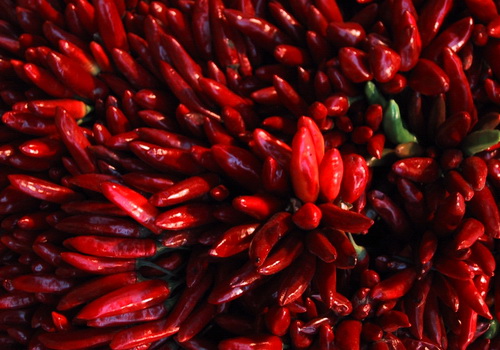
6. Hot Chili Peppers
1. Despite their fiery “hotness,” red and green chilli peppers are one of the most popular spices well-known for their medicinal and health benefiting, disease preventing and health promoting properties. 2. Chilli peppers contain the health benefiting alkaloid compound or enzyme capsaicin,which gives them their strong spicy pungent flavor. The analgesic and anti-bacterial capsaicin found in chilli peppers also has anti-diabetic properties, and helps to lower bad cholesterol levels(LDL). 3. Chilies are amazingly high in levels of vitamins and minerals, including potassium, manganese, iron, and magnesium, and B-complex vitamins such as niacin, pyridoxine (vitamin B-6), riboflavin and thiamin (vitamin B-1), which are essential for replenishing the body. 4. Red and green chili peppers, especially the fresh ones, are calorie-free, rich source of vitamin-C(100 g provides approximately 240g of the RDA), and contain other antioxidants such as vitamin A, and flavonoids including α-carotene, ß-carotene, cryptoxanthin, lutein, and zea-xanthin. The antioxidants in capsicum protect the body from severe injuries, and alleviate the effects of free radicals that are generated during stress, and other disorders.
- Important notification about information and brand names used in this slideshow!
- Photo courtesy of fishbulb by sxc : www.sxc.hu/photo/260109
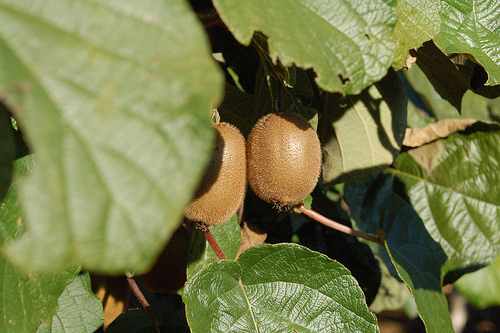
2. Kiwis and Papayas
1. In China, the kiwi is also known as Chinese gooseberry. This super-fruite contains minreals, phyto-chemicals, and health-promoting vitamins. 2. Talk about a popular fruit: The kiwi is native to eastern Chinese "Shaanxi" province, and is the national fruit of China, and the national symbol of New Zealand! 3. Although the fruit is typically eaten raw. It also makes a delicious dessert: The Pavlova-New Zealand's national dessert(which is unsurprisingly topped with -what else? Kiwis :) 4. Research studies have indicate that consuming foods rich in omega-3 fatty acids may reduce the risk of coronary heart disease, stroke, and help prevent autism, ADHD, and other developmental disorders in children. The good news is that the seeds of this delicious fruit are an excellent source of omega-3 fatty acids. A medium kiwi contains 70 mg of Vitamin C, and 46 calories. Papayas: This delicious mouth-watering, tropical fruit is 'chock full' of amazing health benefits, and a rich history for medicinal uses: 1. The fruit is used for nausea and morning sickness, other digestive and intestinal problems, and have been used to kill intestinal worms and parasites. 2. Papaya is great for the skin and helps to get rid of acne and skin...
1. In China, the kiwi is also known as Chinese gooseberry. This super-fruite contains minreals, phyto-chemicals, and health-promoting vitamins. 2. Talk about a popular fruit: The kiwi is native to eastern Chinese "Shaanxi" province, and is the national fruit of China, and the national symbol of New Zealand! 3. Although the fruit is typically eaten raw. It also makes a delicious dessert: The Pavlova-New Zealand's national dessert(which is unsurprisingly topped with -what else? Kiwis :) 4. Research studies have indicate that consuming foods rich in omega-3 fatty acids may reduce the risk of coronary heart disease, stroke, and help prevent autism, ADHD, and other developmental disorders in children. The good news is that the seeds of this delicious fruit are an excellent source of omega-3 fatty acids. A medium kiwi contains 70 mg of Vitamin C, and 46 calories. Papayas: This delicious mouth-watering, tropical fruit is 'chock full' of amazing health benefits, and a rich history for medicinal uses: 1. The fruit is used for nausea and morning sickness, other digestive and intestinal problems, and have been used to kill intestinal worms and parasites. 2. Papaya is great for the skin and helps to get rid of acne and skin infections, and to open clogged pores. The fruit's enzyme: papain helps to dissolve dead cells, for a fresh and glowing skin. 3. Healing properties: Papaya also has anti-proliferative effects on liver cancer cells, and works to stop or slows down the growth of cancer cells in the liver. It also helps kidneys recover. 4. Overall, Papaya has been enjoyed lavishly on all continents as a part of cuisines and salads. A half cup of this delicious fruit is only 70 calories, and packs 150 mg(more than the RDA) of Vitamin C. No wonder it was dubbed the “fruit of the angels” by Christopher Columbus and why the ancient Mayans worshiped the papaya tree, and called it the “Tree of Life.”
- Important notification about information and brand names used in this slideshow!
- Photo courtesy of Brendon Connelly by Flickr : www.flickr.com/photos/bzo/1796802413/
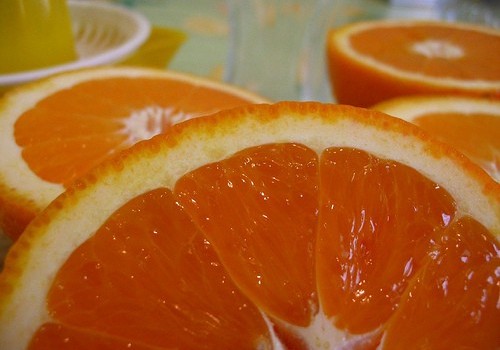
3. The Citrus Gang
1. Oranges, Clementines and Tangerines are citrus fruits, which are rich sources of vitamin-C. They are also chock full of calcium and potassium which are important for cell regulating and control our body fluids, blood pressure, and heart rate and they are low in calories, and contains no saturated fats or cholesterol. Additionally, this 'citrus gang' contains natural soluble and the insoluble dietary fiber pectin,which is also very effective for helping to control body weight. Pectin also helps to prevent the absorption of cholesterol in the gut, and promotes smooth bowel movements by acting as a laxative. 2. Clementines are smaller, very sweet and juicy with a more smooth and glossy skin, and almost are almost seedless. Like its 'citrus siblings' Clementines is packed with vitamin A as well. This is essential for good vision, and in the maintenance of healthy mucus membranes and skin, and to protect from lung and oral cavity cancers. 3. Tangerines are very low (53 calories per 100 g) in calories, and are great sources of flavonoid anti-oxidants such as carotenes, hesperetin, naringenin, naringin, xanthins, luteins and vitamin A, and in higher amounts than in oranges, and like Oranges, Tangerines and Clementines are also a...
1. Oranges, Clementines and Tangerines are citrus fruits, which are rich sources of vitamin-C. They are also chock full of calcium and potassium which are important for cell regulating and control our body fluids, blood pressure, and heart rate and they are low in calories, and contains no saturated fats or cholesterol. Additionally, this 'citrus gang' contains natural soluble and the insoluble dietary fiber pectin,which is also very effective for helping to control body weight. Pectin also helps to prevent the absorption of cholesterol in the gut, and promotes smooth bowel movements by acting as a laxative. 2. Clementines are smaller, very sweet and juicy with a more smooth and glossy skin, and almost are almost seedless. Like its 'citrus siblings' Clementines is packed with vitamin A as well. This is essential for good vision, and in the maintenance of healthy mucus membranes and skin, and to protect from lung and oral cavity cancers. 3. Tangerines are very low (53 calories per 100 g) in calories, and are great sources of flavonoid anti-oxidants such as carotenes, hesperetin, naringenin, naringin, xanthins, luteins and vitamin A, and in higher amounts than in oranges, and like Oranges, Tangerines and Clementines are also a very good source of B-complex vitamins such as thiamin, pyridoxine, and folates, which are essential to replenish the body. 4. We tend to think citrus when we think Vitamin C, and often consider especially oranges the quickest and fastest way to 'inject' ourselves with a vitamin C boost? Although they do not rank # 1 in vitamin C dosage; a medium orange contains 70 mg of vitamin C and 62 calories. A ¾ cup of orange juice has 61-93 mg of the important vitamin C and only 79-84 calories.
- Important notification about information and brand names used in this slideshow!
- Photo courtesy of Gyorgy Weil by Flickr : www.flickr.com/photos/wgyuri/501884430/
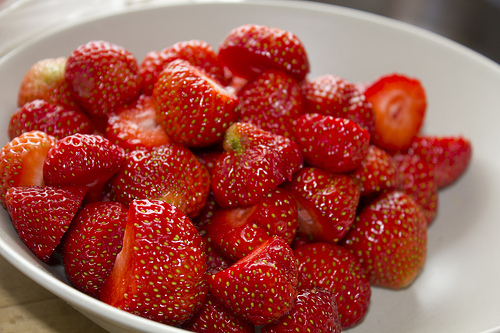
4. Strawberries
1. Strawberries are low in calories, are a rich source of phyto-nutrients, minerals and vitamins that are essential for our general health. They are delicious, high in phenolic flavonoid phyto-chemicals (anthocyanins) and ellagic acid, which has health benefits against cancer, aging, inflammation and many neurological diseases such as Parkinson's. 2. Strawberries are also quite rich in the B-complex group of vitamins, with good levels of vitamin B-6, niacin, riboflavin, pantothenic acid and folic acid, that act as co-factors to help the body metabolize carbohydrate, proteins and fats. 3. Strawberries also contain potassium, manganese, fluorine, copper, iron and iodine. Respectively they control heart rate and blood pressure, and act as a co-factor for the antioxidant enzyme, superoxide dismutase, aid the formation and production of red blood cells, maintain good bones and teeth and prevent dental caries. 4. Strawberries contain vitamin A, as well as Vitamin E and other health promoting flavonoids and poly phenolic antioxidants such as lutein, zea-xanthin, and beta-carotene that helps with aging, and prevention and regulation of diseases. A ½ cup of strawberries contain 49 mg of vitamin C and only 27 calories!
- Important notification about information and brand names used in this slideshow!
- Photo courtesy of David Eriksson-Wigg by Flickr : www.flickr.com/photos/david-eriksson-wigg/8631734469/
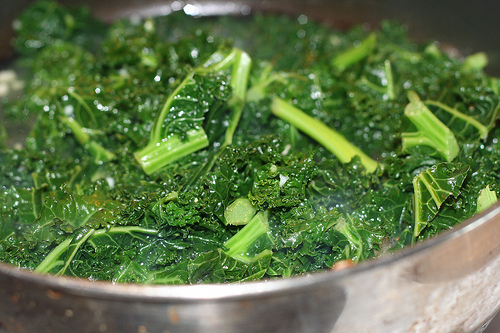
5. Those Dark and Leafy Greens
1. Dark leafy greens such as Kale, Spinach, broccoli, brussel sprouts and others are rich in health benefiting polyphenolic flavonoid compounds such as lutein, zea-xanthin, and beta-carotene, as well as other vitamins. Kale is part of the “cabbage” family, and is also related to broccoli, brussels sprouts, and cauliflower. 2. Kale is also very rich in vitamin A which helps the eyes, it helps to combat anemia, and osteoporosis, protects the skin and protects against cardiovascular diseases. Because it contains phytochemicals, kale may also offer protection against colon and prostate cancers. 3. Immune-modulators in Kale and other dark-leafy greens, serves as anti-bacterial and anti-viral agents. They also are very rich source of ßeta-carotene which is converted to Vitamin A, lutein as well as zea-xanthin, which have powerful anti-oxidant and anti-carcinogenic or cancer-causing properties. 4. Kale is quite versatile, cholesterol free, low-fat and packed with anti-oxidants.The best part is that a cup of chopped kale, has approximately 135 mg of Vitamin C and 36 calories!
- Important notification about information and brand names used in this slideshow!
- Photo courtesy of Kate Ter Haar by Flickr : www.flickr.com/photos/katerha/8525119629/

Vitamin C: Perfect For Boosting The Immune System
Vitamin C, also known as ascorbic acid, has been touted by Nobel laureate Linus Pauling, Ph.D., as well as by many health and nutrition experts as a powerful, fascinating and important nutrient necessary for our overall health and well button. Because vitamins are carbon-containing molecules, that promote reactions within the body; If reactio-causing catalysts are are missing, individuals could end up with vitamin deficiencies, a total break down in normal body functions, which usually make them more susceptible to colds, fevers, and diseases. As such, it is critical to ensure proper vitamin and nutrient levels as this will go along way to provide a cushion for our bodies and especially our immune systems.

See No Cataracts With Vitamin C
A cataract is characteristic of cloudiness of the lens of the eye, which makes it extremely difficult to see. Cataracts are often age-related, and especially in those who live much longer and have been exposed to more of the sunlight's ultraviolet rays and exposure to free radicals in the eye. This exposure eventually leads to ocular cell damage which leads to cataracts. Those more susceptible are diabetics,smokers and those who are exposed to excessive amounts of sunlight. Smokers use antioxidants at a very high rate Since cigarette smoke creates high numbers of free radicals, smokers tend to use antioxidants at a very high rate.Numerous studies have indicate that those with lower levels of antioxidants in their bloodstream and in the lens of the eye have a higher incidence of cataracts. Those with diabetes, develop cataracts differently. For example, they tend to have higher than normal levels of sugar in the bloodstream and eye, which places extra pressure on the lens, damaging the cells, causing inflexibility and cataract formation. Since vitamin C is high in antioxidants, they provide a natural defense against cataracts. Vitamin C-rich foods ; and those with flavonoids such as Quercetin help to prevent the formation of sugar...
A cataract is characteristic of cloudiness of the lens of the eye, which makes it extremely difficult to see. Cataracts are often age-related, and especially in those who live much longer and have been exposed to more of the sunlight's ultraviolet rays and exposure to free radicals in the eye. This exposure eventually leads to ocular cell damage which leads to cataracts. Those more susceptible are diabetics,smokers and those who are exposed to excessive amounts of sunlight. Smokers use antioxidants at a very high rate Since cigarette smoke creates high numbers of free radicals, smokers tend to use antioxidants at a very high rate.Numerous studies have indicate that those with lower levels of antioxidants in their bloodstream and in the lens of the eye have a higher incidence of cataracts. Those with diabetes, develop cataracts differently. For example, they tend to have higher than normal levels of sugar in the bloodstream and eye, which places extra pressure on the lens, damaging the cells, causing inflexibility and cataract formation. Since vitamin C is high in antioxidants, they provide a natural defense against cataracts. Vitamin C-rich foods ; and those with flavonoids such as Quercetin help to prevent the formation of sugar in the eye in diabetics. Additionally, beta-carotene and carotenoids with lutein help to fight free radicals. Berries, since they are also quite rich in potent anthocyanidins, which are flavonoids and free-radical fighters, help to protect the lens and the retina. Finally, Bilberry contains flavonoids, which help to stave off cataracts , lower and stabilize blood sugar levels in diabetics.
- Important notification about information and brand names used in this slideshow!
- Photo courtesy of Ali T by Flickr : www.flickr.com/photos/77682540@N00/2618400441/

Vitamin C is Kind To Your Wounds
Vitamin C is important for wound and tissue healing. Its role in the healing process, has been referenced in numerous medical journals. Specifically, researchers discovered that healing was slower in individuals who were deficient in the vitamin. The research evidence from the related medical literature also suggest that patients with peptic ulcers also healed faster if they took vitamin C than those who do not. This powerful vitamin also act as a reducing agent to prevent major terminal and degenerative diseases including but not limited to cancer, Parkinson's and cardiovascular diseases. Vitamin C is also very important for synthesizing carnitine, collagen, connective tissue protein, neurotransmitters and steroid hormones in our bodies.
- Important notification about information and brand names used in this slideshow!
- Photo courtesy of Debs (ò‿ó)♪ by Flickr : www.flickr.com/photos/littledebbie11/4306302744/

Prevent Diseases, Build, Protect and Maintain Overall Health With This Powerful Vitamin
Many Vitamin-C-rich foods especially leafy green foods are also excellent sources of vitamin-K; which promotes bone health. Adequate vitamin-K levels in the diet also helps to limit nerve damage in the brain; and as such has been established as having potential to play a role in the treatment of patients suffering from diseases such as Alzheimer's, Cancer, Diabetes, Parkinson's and other dementia-related illnesses. Vitamin C in very high doses significantly stimulates L-dopa production which is used in the treatment of Parkinson's disease. It enables the body to naturally and safely produce the end product, epinephrine. As a potential help or solution for such a terrible disease, it is also one that is cost-effective, safe, and is worth a try.
- Important notification about information and brand names used in this slideshow!
- Photo courtesy of SalFalko by Flickr : www.flickr.com/photos/safari_vacation/6765938509/lightbox/

The Health Benefits of Vitamin C
Vitamin C helps to absorb iron from the food we eat by reducing the ferrous form of iron elements to their ferric forms in the gut. While many food sources provide us with natural vitamin C, many would be surprised that in fact, although oranges enter our minds whenever we think of Vitamin C, they do not in fact rank No. 1. To most, Vitamin C is known and considered to be our most powerful ally, especially when we are trying to prevent or kick a cold, flu and other illness. However, this 'power-house' anti-oxidant, in combination with calcium and iron is also very integral in our diet for also counteracting lead poisoning-Who knew? In general however, Vitamin C is the best natural remedy that helps the body maintain healthy tissues, a strong immune system, helps to stave off diseases such as Parkinsons, Cancer, Diabetes. It aids in the absorption of iron, helps to heal wounds and is good for overall good health. According to the Center for Disease Control and Prevention (CDC), the recommended daily allowance (RDA) for adult men is 90 mg and for 75 mg for women.





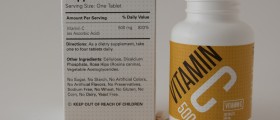



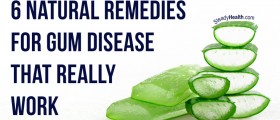




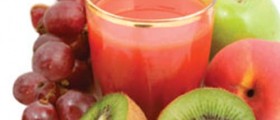
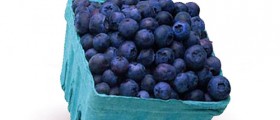



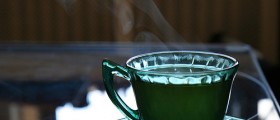
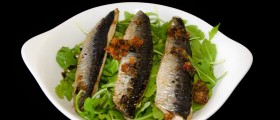





Your thoughts on this
Loading...